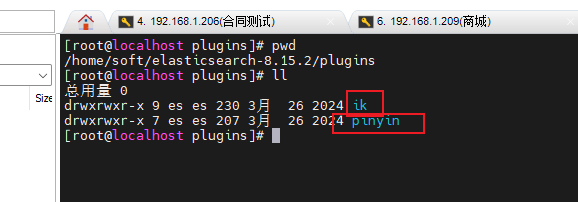Centos下安装Elasticsearch记录
1407字约5分钟
1. 下载ES
下载地址:https://www.elastic.co/cn/downloads/past-releases
相应的版本对应相应地址规则,例如:https://www.elastic.co/cn/downloads/past-releases/elasticsearch-7-8-0
如图:
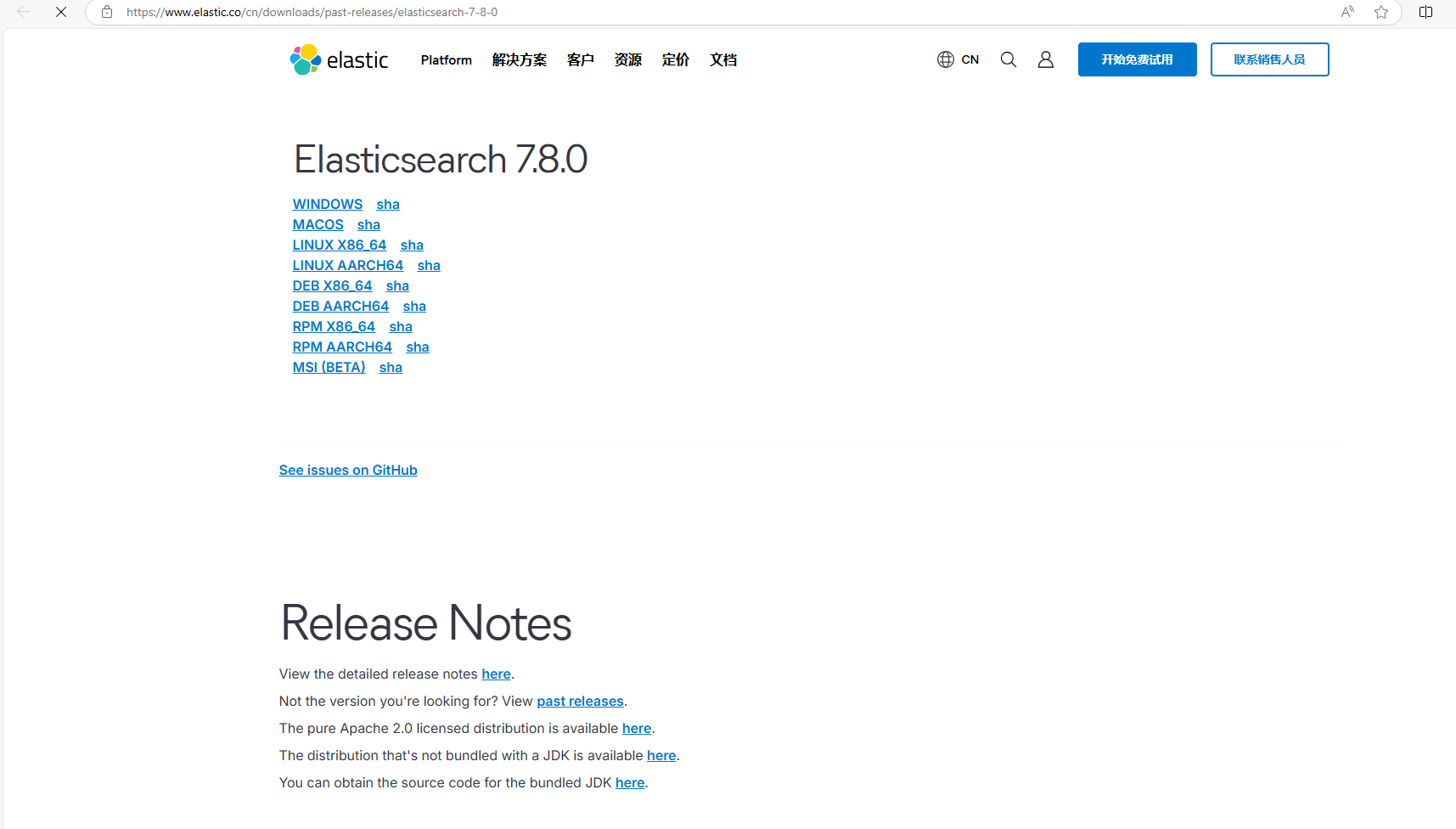
ES版本和jdk版本对应关系:https://www.elastic.co/cn/support/matrix#matrix_jvm
注意
需要下载和Linux系统架构一致的ES安装包
2. 解压tar包并放在安装的目录
3. 创建Linux用户
在es中超级管理员用户是不允许操作es的,因此需要添加其他用户来操作es
useradd es #新增 es 用户
passwd es #为 es 用户设置密码
userdel -r es #如果错了,可以删除再加
chown -R es:es /opt/module/es #文件夹所有者,即给es用户设置可操作的目录权限4. JDK设置
ES的启动需要jdk环境,默认情况下,如果Linux系统中安装了Java环境,ES会直接去找系统的jdk。
ES自己也带有jdk,默认情况下,如果Linux系统中没有Java环境,ES会使用自己的jdk。
注
建议在启动ES时使用ES自己的jdk,因为ES版本和jdk版本是有关联的,正常情况下,Linux系统级的jdk版本是不可修改的,不能因为要使用ES就修改系统级的jdk版本。
5. 设置ES使用ES自己的jdk
个人尝试了三个ES版本:8.15.1,8.15.2,7.17.18
5.1 8.x版本
对应 8.15.1,8.15.2 版本或者说 8.x版本(8.x其他版本没试,只是猜测)的变化不大,设置方式如下:
进入到es安装包目录的bin 目录下找到elasticsearch 文件
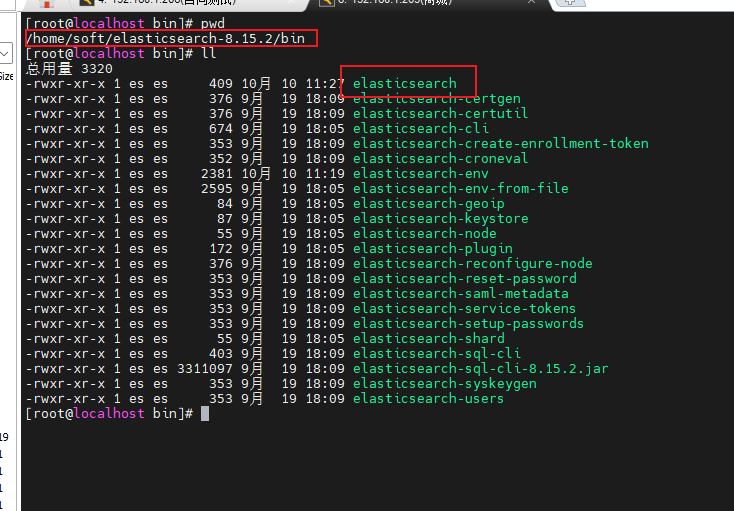
编辑文件 vim elasticsearch,设置ES自己的jdk环境,一定要把设置放在最下边
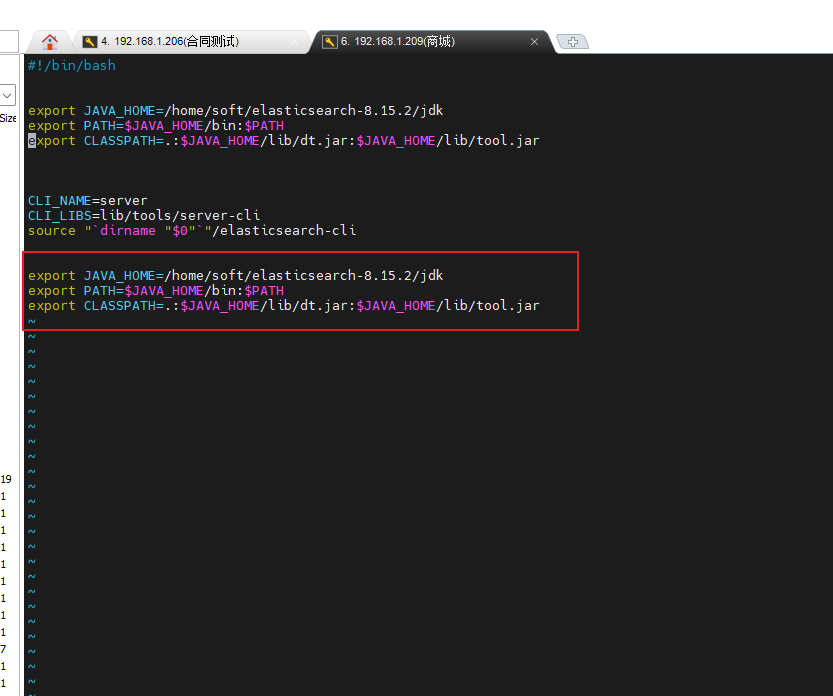
# JAVA_HOME 目录需要改成自己的es的jdk目录
export JAVA_HOME=/home/soft/elasticsearch-8.15.2/jdk
export PATH=$JAVA_HOME/bin:$PATH
export CLASSPATH=.:$JAVA_HOME/lib/dt.jar:$JAVA_HOME/lib/tool.jar5.2 对于7.17.18 版本
7.17.18版本的elasticsearch文件和8.15.x版本的elasticsearch文件差别很大,我也没做研究
我的环境是jdk17,没有修改jdk就可以,所以这里就不赘述了
6. 设置参数配置
6.1 设置ES配置文件(elasticsearch.yml)
位置:ES包/config/elasticsearch.yml
内容如下:
# ======================== Elasticsearch Configuration =========================
#
# NOTE: Elasticsearch comes with reasonable defaults for most settings.
# Before you set out to tweak and tune the configuration, make sure you
# understand what are you trying to accomplish and the consequences.
#
# The primary way of configuring a node is via this file. This template lists
# the most important settings you may want to configure for a production cluster.
#
# Please consult the documentation for further information on configuration options:
# https://www.elastic.co/guide/en/elasticsearch/reference/index.html
#
# ---------------------------------- Cluster -----------------------------------
#
# Use a descriptive name for your cluster:
# 集群名称
cluster.name: elasticsearch
#
# ------------------------------------ Node ------------------------------------
#
# Use a descriptive name for the node:
# 节点名
node.name: node-1
#
# Add custom attributes to the node:
#
#node.attr.rack: r1
#
# ----------------------------------- Paths ------------------------------------
#
# Path to directory where to store the data (separate multiple locations by comma):
# 数据存放位置
path.data: /home/soft/elasticsearch-7.17.18/data
#
# Path to log files:
# 日志存放位置
path.logs: /home/soft/elasticsearch-7.17.18/logs
#
# ----------------------------------- Memory -----------------------------------
#
# Lock the memory on startup:
#
#bootstrap.memory_lock: true
#
# Make sure that the heap size is set to about half the memory available
# on the system and that the owner of the process is allowed to use this
# limit.
#
# Elasticsearch performs poorly when the system is swapping the memory.
#
# ---------------------------------- Network -----------------------------------
#
# By default Elasticsearch is only accessible on localhost. Set a different
# address here to expose this node on the network:
# 设置所有机器都可以访问
network.host: 0.0.0.0
#
# By default Elasticsearch listens for HTTP traffic on the first free port it
# finds starting at 9200. Set a specific HTTP port here:
# 设置端口
http.port: 9200
#
# For more information, consult the network module documentation.
#
# --------------------------------- Discovery ----------------------------------
#
# Pass an initial list of hosts to perform discovery when this node is started:
# The default list of hosts is ["127.0.0.1", "[::1]"]
#
#discovery.seed_hosts: ["host1", "host2"]
#
# Bootstrap the cluster using an initial set of master-eligible nodes:
#
cluster.initial_master_nodes: ["node-1"]
#
# For more information, consult the discovery and cluster formation module documentation.
#
# ---------------------------------- Various -----------------------------------
#
# Require explicit names when deleting indices:
#
#action.destructive_requires_name: true
#
# ---------------------------------- Security ----------------------------------
#
# *** WARNING ***
#
# Elasticsearch security features are not enabled by default.
# These features are free, but require configuration changes to enable them.
# This means that users don’t have to provide credentials and can get full access
# to the cluster. Network connections are also not encrypted.
#
# To protect your data, we strongly encourage you to enable the Elasticsearch security features.
# Refer to the following documentation for instructions.
#
# https://www.elastic.co/guide/en/elasticsearch/reference/7.16/configuring-stack-security.html
# 开启es跨域
http.cors.enabled: true
http.cors.allow-origin: "*"
http.cors.allow-headers: Authorization
# # # 开启安全控制
xpack.security.enabled: true
xpack.security.transport.ssl.enabled: true6.2 修改jvm启动参数
防止撑满内存
位置:es包/config/jvm.options
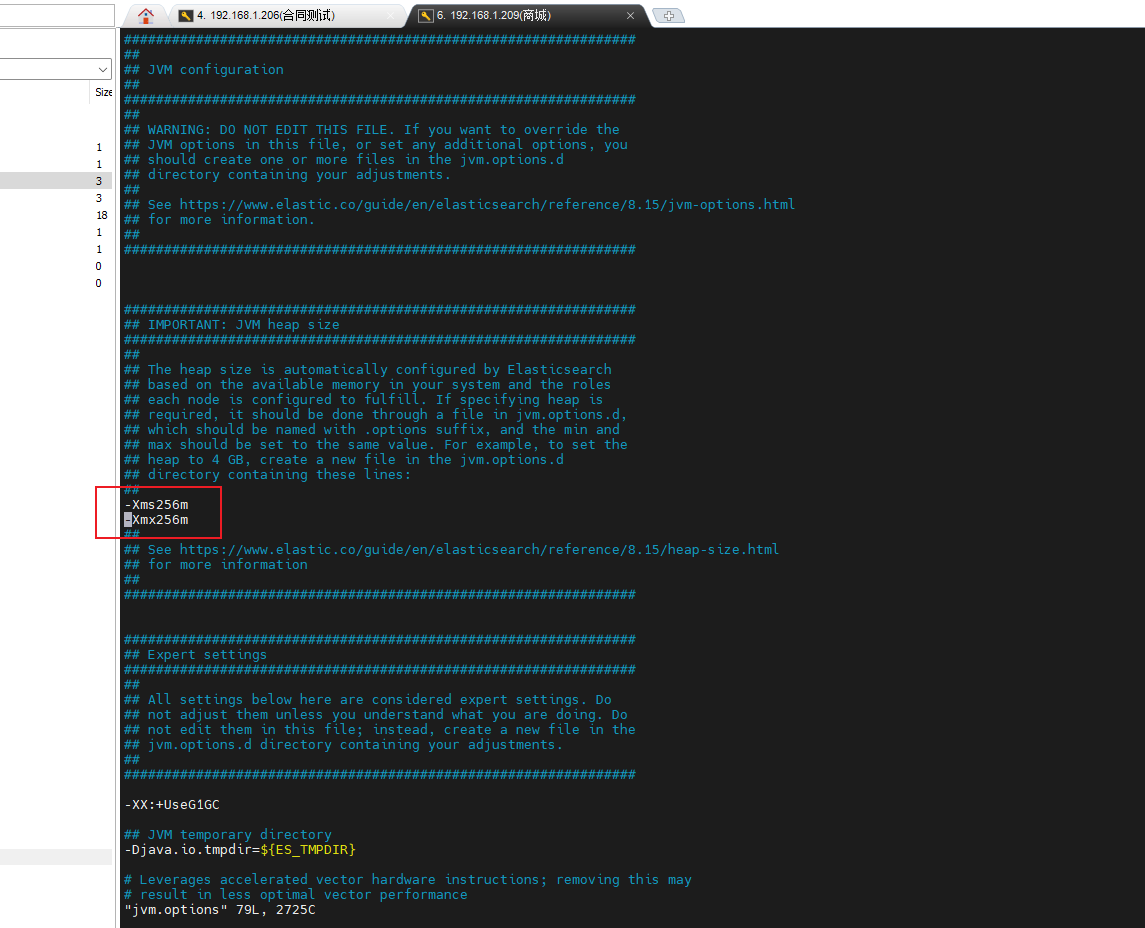
6.3 修改/etc/security/limits.conf
vim /etc/security/limits.conf
# 在文件末尾中增加下面内容
# 每个进程可以打开的文件数的限制
es soft nofile 65536
es hard nofile 655366.4 修改/etc/security/limits.d/20-nproc.conf
vim /etc/security/limits.d/20-nproc.conf
# 在文件末尾中增加下面内容
# 每个进程可以打开的文件数的限制
es soft nofile 65536
es hard nofile 65536
# 操作系统级别对每个用户创建的进程数的限制
* hard nproc 4096
# 注: * 带表 Linux 所有用户名称6.5 修改/etc/sysctl.conf
# 在文件中增加下面内容
# 一个进程可以拥有的 VMA(虚拟内存区域)的数量,默认值为 65536
vm.max_map_count=6553606.6 重新加载或重启Linux系统
sysctl -p7. 启动
进入:es包/bin
# 切换到上面添加的es用户
su es
# 非后台启动,关闭命令行则es关闭,建议安装测试阶段使用该方式,也容易查看报错记录
./elasticsearch
# 后台启动
./elasticsearch -d8. 设置或修改 ES密码
进入 es包/bin
7.x版本和8.x版本有些不同,7.x版本没有设置密码只有重置密码
7.x
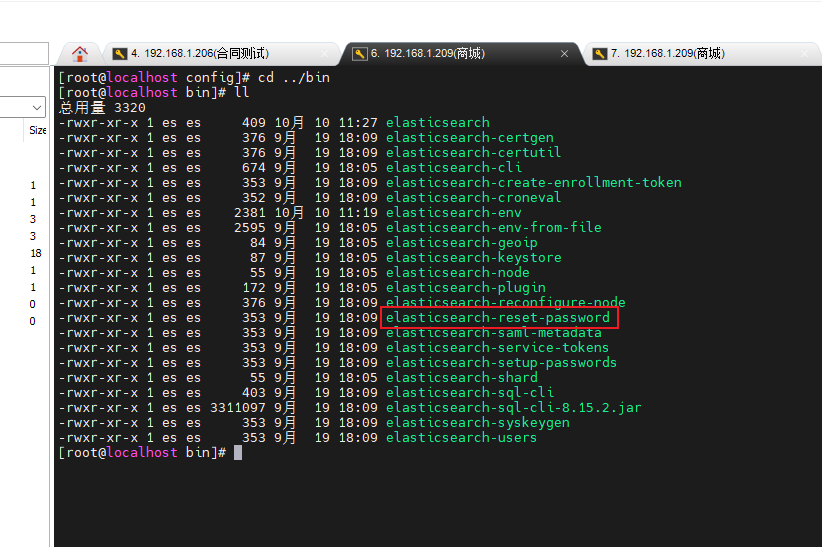
8.x
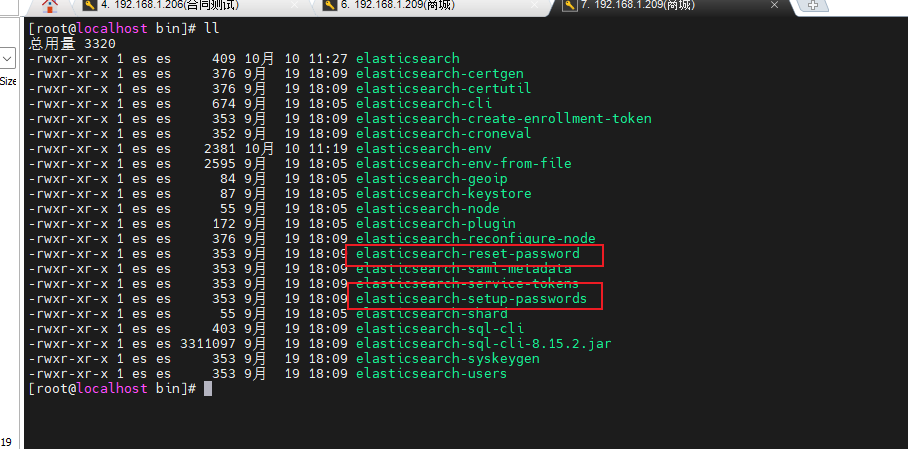
设置密码方式:
# 设置密码
./elasticsearch-setup-passwords interactive
# 重置密码
./elasticsearch-reset-passwords interactive9. 访问测试是否成功
使用默认的9200(上面配置文件设置的端口)端口访问,如下则表示启动成功
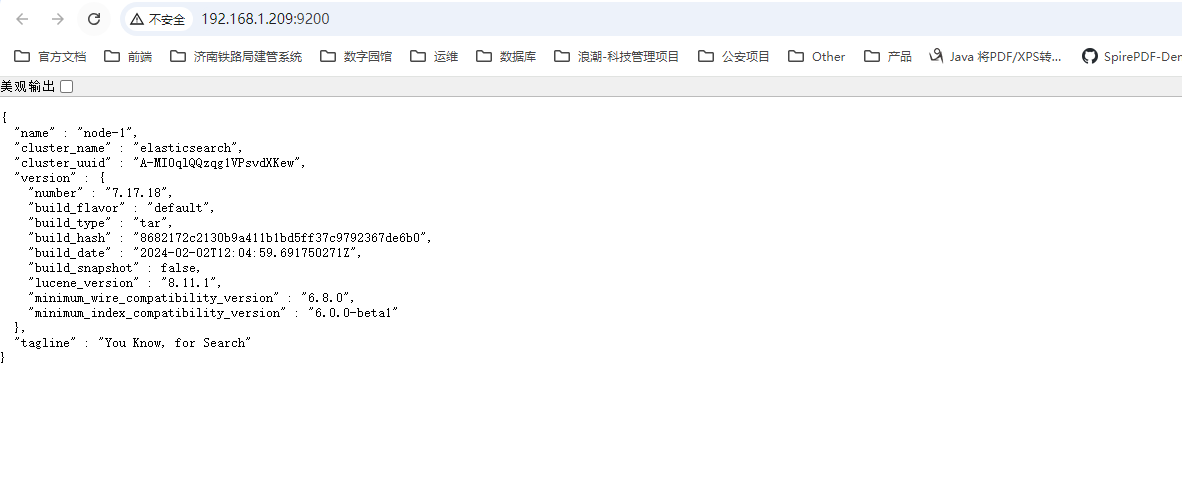
10. 安装插件
注意
ES插件需要和ES版本号相对应
拼音插件地址:https://github.com/infinilabs/analysis-pinyin/releases 分词插件地址:https://github.com/infinilabs/analysis-ik/releases
下载这个zip
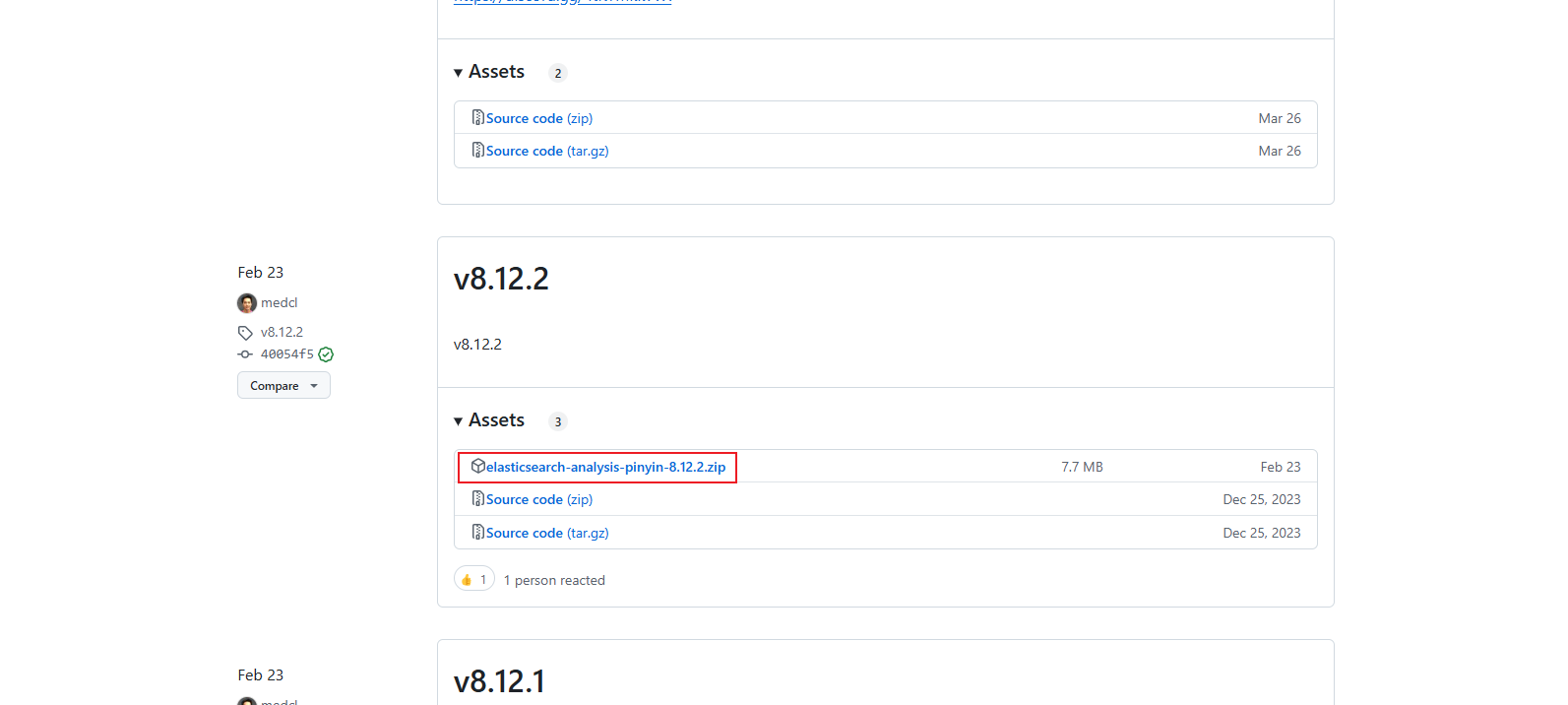
然后解压放到 es包/plugins下,重启es即可
